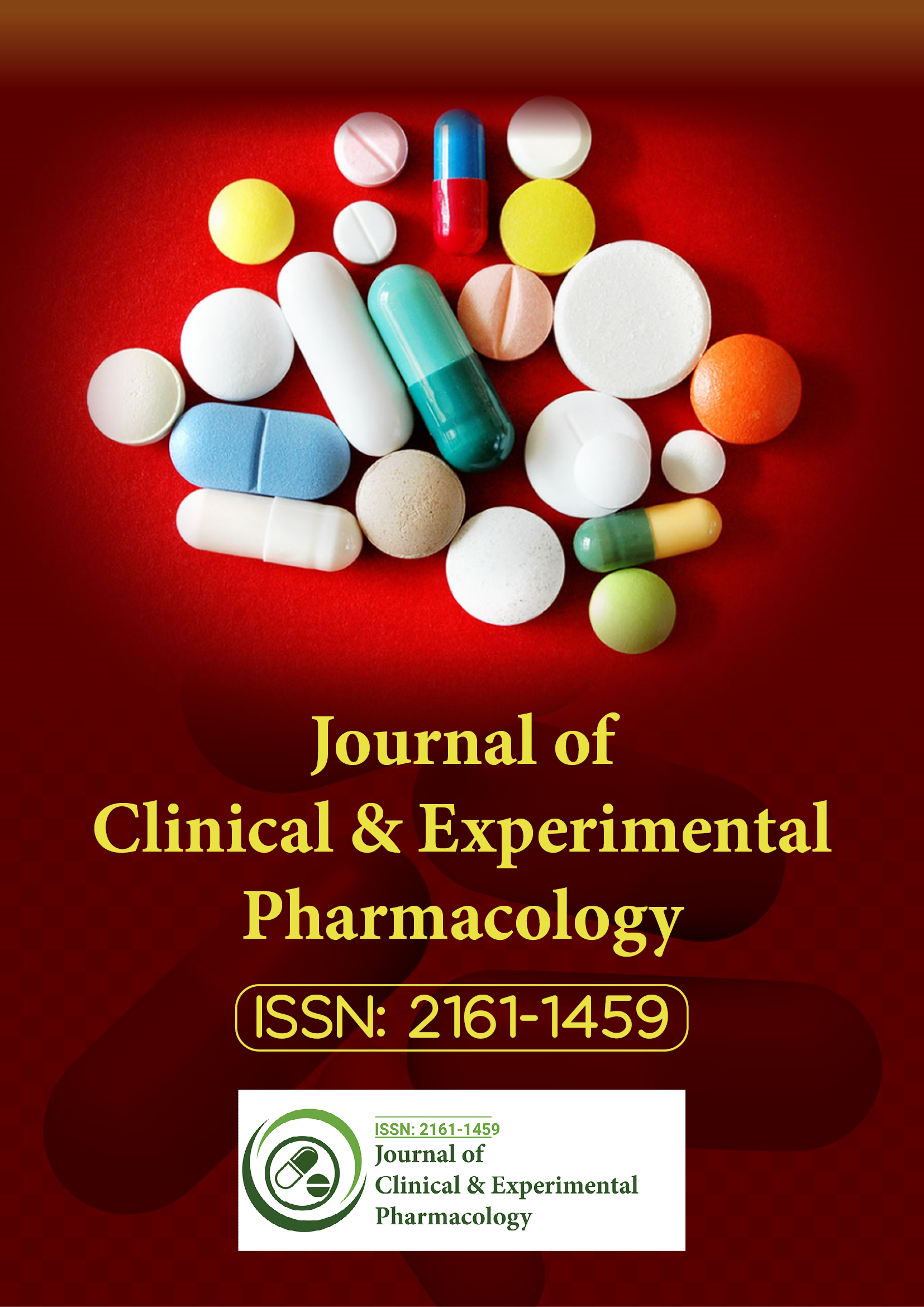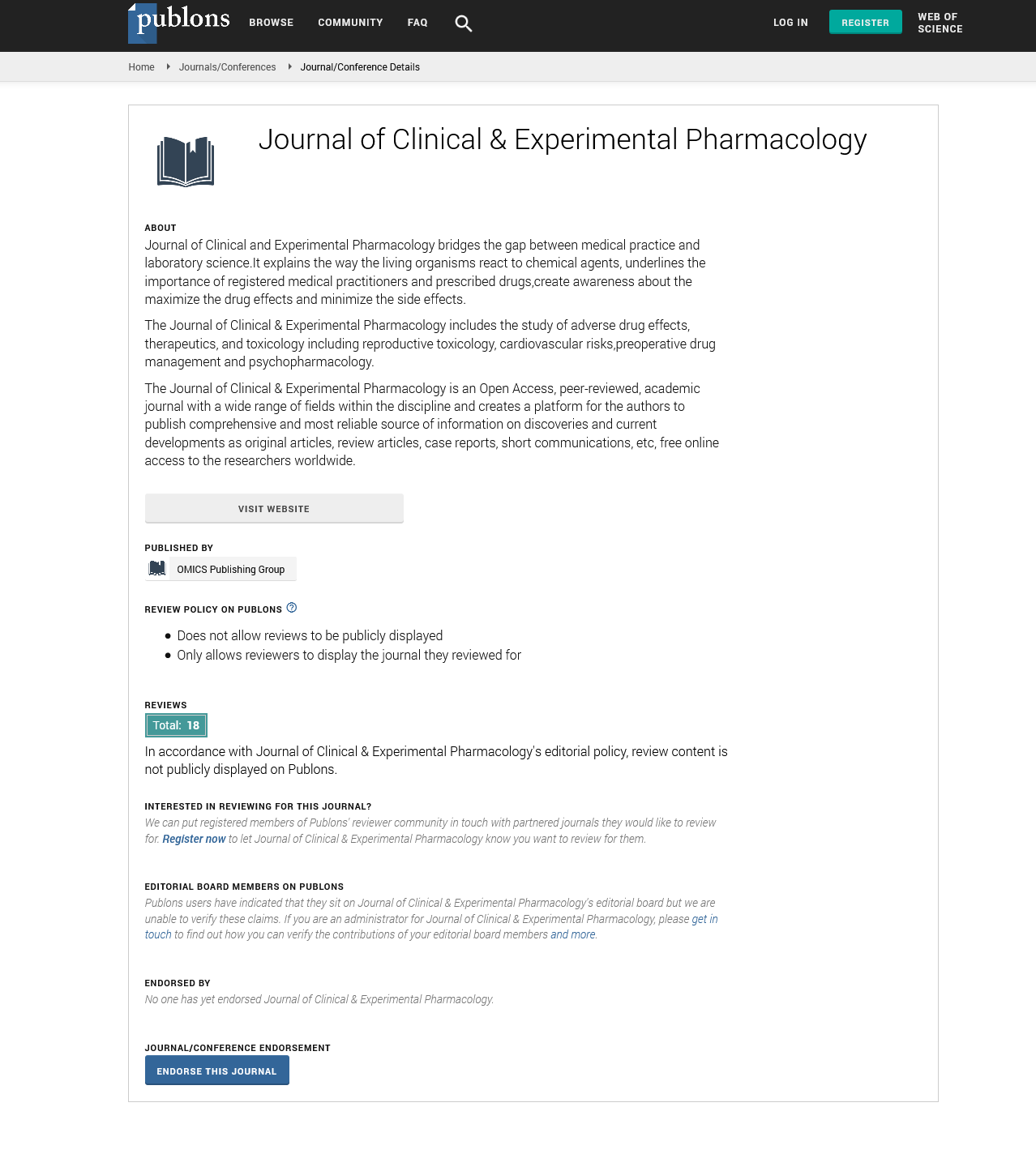Indexed In
- Open J Gate
- Genamics JournalSeek
- China National Knowledge Infrastructure (CNKI)
- Ulrich's Periodicals Directory
- RefSeek
- Hamdard University
- EBSCO A-Z
- OCLC- WorldCat
- Publons
- Google Scholar
Useful Links
Share This Page
Journal Flyer

Open Access Journals
- Agri and Aquaculture
- Biochemistry
- Bioinformatics & Systems Biology
- Business & Management
- Chemistry
- Clinical Sciences
- Engineering
- Food & Nutrition
- General Science
- Genetics & Molecular Biology
- Immunology & Microbiology
- Medical Sciences
- Neuroscience & Psychology
- Nursing & Health Care
- Pharmaceutical Sciences
Opinion Article - (2025) Volume 15, Issue 1
Understanding Complex Drug Interactions in Polypharmacy Using Network Models
Thomas Fischer*Received: 29-Jan-2025, Manuscript No. CPECR-25-28885; Editor assigned: 31-Jan-2025, Pre QC No. CPECR-25-28885 (PQ); Reviewed: 14-Feb-2025, QC No. CPECR-25-28885; Revised: 21-Feb-2025, Manuscript No. CPECR-25-28885 (R); Published: 28-Feb-2025, DOI: 10.35248/2161-1459.25.15.465
Description
Adverse Drug Reactions (ADRs) are a significant cause of morbidity and mortality, presenting a major challenge in clinical medicine. Despite extensive research into the mechanisms underlying these reactions, a comprehensive understanding of how specific drugs interact with individual genetic, environmental and disease-related factors remains elusive. Recent advancements in network-based analysis provide a potential approach to bridge this gap, allowing researchers to explain common mechanisms linking ADRs with disease phenotypes. By controlling data from multiple sources, including genomics, proteomics and pharmacogenomics, network-based approaches enable the identification of shared molecular pathways that could help in predicting ADRs and improving drug safety.
The traditional approach to studying ADRs often involves focusing on specific drugs or specific adverse effects. However, this method does not account for the complex and multifactorial nature of drug toxicity. ADRs can arise from various factors, including genetic polymorphisms, interactions between drugs and disease-specific pathways and environmental factors such as diet or pre-existing conditions. Network-based analysis, in contrast, offers a more holistic view by integrating vast amounts of data to identify common biological networks involved in both ADRs and disease phenotypes.
One of the core concepts in network-based analysis is the identification of drug-disease-gene interactions. By constructing molecular networks, it is possible to map the relationship between specific drugs, disease-associated genes and the biological processes involved in both. Such networks can reveal common pathways or molecular signatures that underlie ADRs and disease pathogenesis. For example, many ADRs are linked to the overexpression or inhibition of certain enzymes, receptors, or transporters, which are also involved in disease pathways. Through network analysis, researchers can pinpoint these shared molecular targets and understand how they contribute to both adverse reactions and disease progression. This insight can potentially lead to the development of biomarkers that predict ADRs in patients with specific disease phenotypes, improving personalized treatment strategies.
Another advantage of network-based analysis is its ability to uncover potential drug repurposing opportunities. Often, drugs initially developed for one condition can have unintended effects on other diseases. By examining the overlap in the molecular mechanisms of ADRs and disease phenotypes, it is possible to identify drugs that may be useful for treating multiple conditions. For example, a drug that induces hepatotoxicity might also be implicated in the progression of certain liver diseases. Network-based analysis could uncover this link, leading to the identification of other drugs with similar effects, as well as potential therapeutic agents for the disease.
Moreover, this approach can also assist in understanding complex drug interactions, which are a common cause of ADRs. Polypharmacy, or the simultaneous use of multiple drugs, often leads to adverse interactions that are difficult to predict. Network-based models can simulate how multiple drugs interact within the same biological networks, providing insights into potential interactions that may not be apparent through traditional clinical trials. By focusing on shared molecular pathways, these models can predict how a combination of drugs might affect disease outcomes and reveal potential ADRs that could arise from polypharmacy.
The integration of patient-specific data is another essential element in making network-based analysis more effective. Advances in precision medicine and pharmacogenomics have shown that genetic variations can significantly influence a patient’s response to drugs. By incorporating individual genetic profiles into network-based models, researchers can identify which patients are most at risk for ADRs based on their genetic predispositions. This patient-centric approach could improve the predictive power of ADR networks, leading to safer and more tailored drug regimens.
In conclusion, network-based analysis represents a powerful tool for exploring the common mechanisms of ADRs and disease phenotypes. By integrating diverse biological data and identifying shared molecular pathways, these approaches offer new insights into the complex interactions between drugs and diseases. This could lead to the development of predictive models for ADRs, better drug safety practices and more personalized therapeutic strategies. As research in this field progresses, network-based analysis has the potential to transform how we understand and manage the risks associated with drug therapy, ultimately improving patient outcomes.
Citation: Fischer T (2025). Understanding Complex Drug Interactions in Polypharmacy Using Network Models. J Clin Exp Pharmacol. 15:465.
Copyright: © 2025 Fischer T. This is an open-access article distributed under the terms of the Creative Commons Attribution License, which permits unrestricted use, distribution and reproduction in any medium, provided the original author and source are credited.

